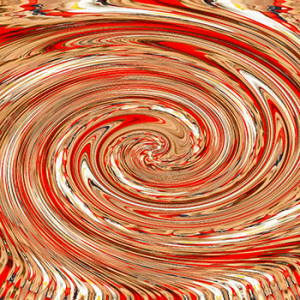The Rise of “Random” – Social Media Gets Bizarre
 After the ground-breaking success of the Old Spice “Man Your Man Could Smell Like” campaign, you knew there were bound to be imitators of its “random” brand of humor. After all, the Old Spice ads sparked a viral sensation that would eventually drive sales up over 107%, an Emmy, a marriage proposal and an enormous flurry of twitter activity. On YouTube, the original commercial presently has over 31 million views – and that’s not mentioning any of the views for the other videos launched in the campaign or the countless profiles also hosting the video.
After the ground-breaking success of the Old Spice “Man Your Man Could Smell Like” campaign, you knew there were bound to be imitators of its “random” brand of humor. After all, the Old Spice ads sparked a viral sensation that would eventually drive sales up over 107%, an Emmy, a marriage proposal and an enormous flurry of twitter activity. On YouTube, the original commercial presently has over 31 million views – and that’s not mentioning any of the views for the other videos launched in the campaign or the countless profiles also hosting the video.
Mashable.com, an authority on all things social media, called Old Spice’s work “The Archetype of a Successful Social Media Campaign“. In case you’ve been living under a rock, here’s the original ad:
Following The Money
Enter Dairy Queen with their “Monkey See, Monkey Do” campaign focused on randomness:
http://www.youtube.com/watch?v=-VtH5xdbMtU
There are guitars that sound like dolphins, flaming rainbows and “old fashioned shaving bunnies”. The hero in the commercials is a handsome devil with a Tom Selleck grade mustache (well, almost). Some might dismiss the similarities as just that – similarities.
Consider how closely the DQ ads follow the pattern cut by Old Spice: a handsome hero wades through surreal scene after surreal scene uttering over-confident random smatterings to the camera. To be certain, Old Spice doesn’t “own” randomness, but the homage paid here is so obvious it’s a little embarrassing.
The results are also strikingly different. While the Old Spice commercial drew 31 million views, the Dairy Queen “Dolphin Guitar” ad has drawn just 31,000 to date while its “Flaming Rainbows” counterpart has just 16,000. While not complete failures, these numbers are far from those generated by Old Spice.
Then again, “random” certainly isn’t dead. If anything, it’s just picking up steam. Consider the new ads by DirectTV (1 million views and growing) that employ the same idea of randomness and “4chan”-esque humor:
http://www.youtube.com/watch?v=-vHT6b7u1_Y
There’s even a website where you can “buy your own” Lap Giraffe, the tiny giraffe on the treadmill in the video.
Clicking on the “I Want Giraffe” button prompts you to share the experience with friends on Facebook and Twitter.
Another more successful campaign focused on “randomness” is the recent series of Skittles “Touch the Rainbow” ads. Here, viewers place their index fingers on their screens with hilarious results:
Creepy? Yes. Effective – well, 2.2 million people have watched this ad alone.
What’s the Difference?
So while it’s not a foolproof method (as demonstrated by Dairy Queen),
random seems to be getting a lot of attention these days. Could it be
right for your business? The answer is maybe. Like “randomness”, viral marketing is an unpredictable thing. While all these campaigns dealt with randomness, Skittles, DirectTV and Old Spice were innovators instead of followers. Whether it’s pressing your finger to the screen or tweeting about a lap giraffe, your campaign needs to have something unique to offer to those you are trying to engage. Simply copying social media successes of the past won’t mean success in
the future. Blazing the trail will pay more dividends than leeching onto
success.
Just ask Old Spice.